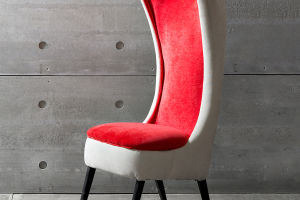Wooden tableware is currently very popular, imparting a natural and rustic feeling while adding a touch of artistic atmosphere to the home.
Wooden tableware is lightweight, sturdy, and comes with many advantages.
1. Are there any safety concerns associated with the use of wooden tableware in our daily lives?
Using wooden tableware is indeed beneficial, but it depends on the type of wooden tableware one chooses. For instance, opting for low-quality wooden bowls might lead to health hazards as manufacturers might resort to painting them to hide flaws, which could harm users. Low-quality wooden tableware may be made from inferior wood that could potentially be harmful to the body after prolonged use.
Therefore, when selecting wooden tableware, it is advisable to choose materials such as persimmon wood, apple wood, or pear wood. These high-quality woods are hard, dense, and less susceptible to rot or mold formation. They also do not emit harmful odors. Additionally, it's recommended to choose untreated wooden tableware, as they do not undergo corrosion-resistant treatment or painting. Otherwise, the surface might contain harmful substances like lead.
Wooden tableware is favored primarily due to its naturally low pollution, lightweight, durability, good insulation properties, and the ability to be customized as decorative pieces.
2. What kind of paint should be used on wooden tableware?
In reality, most wooden bowls available in supermarkets or online are coated with paint.
This is because wooden tableware, being made from natural wood, is susceptible to rot, mold, and decay when not protected from liquids such as water and oil over extended periods. Hence, wooden tableware typically receives a protective coating.
Paint coatings can be categorized as food-grade or non-food-grade. Food-grade paints, if free from additional substances and compliant with regulations, are generally safe to use. However, if a paint emits a strong odor, it may contain formaldehyde, which could be harmful to health with prolonged use.
Painted wooden tableware not only has a glossy surface but is also easier to maintain and use. Untreated wooden tableware, while avoiding paint issues, is susceptible to water damage. Wood has countless microscopic pores, and without thorough drying after washing, it can easily become moldy or rotten, with dirt and grease seeping in.
Before using untreated tableware for the first time, it's advisable to wash and dry them thoroughly. Then, wipe the surface with a bit of olive oil using kitchen or paper towels to create a protective layer, offering some degree of protection.
Additionally, regardless of whether the tableware is painted or not, here are five points to note:
1. When frying food, place a layer of absorbent paper underneath to prevent direct contact with the wood, thus prolonging the tableware's lifespan.
2. Avoid serving foods with strong dyes as the pigments can penetrate the wood's pores, leaving difficult-to-remove yellow stains around the edges.
3. Never put wooden tableware in the microwave, as the moisture content within the wood can cause uneven heating, leading to deformation or cracking.
4. It's best to transfer leftovers to a different container before storing them in the refrigerator, as the fridge absorbs moisture, potentially causing the wooden tableware to warp due to internal dryness.
5. Keep moldy fruits away from wooden tableware, as they carry spores invisible to the eye, which can easily spread in the air. Wooden tableware, containing moisture, provides an ideal breeding ground for mold.


